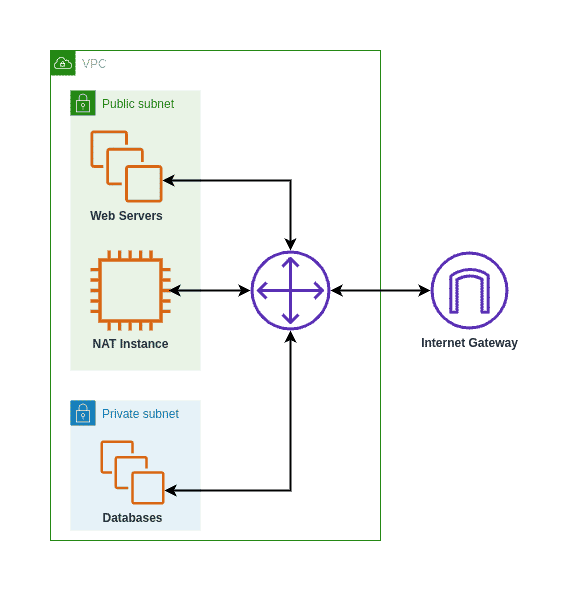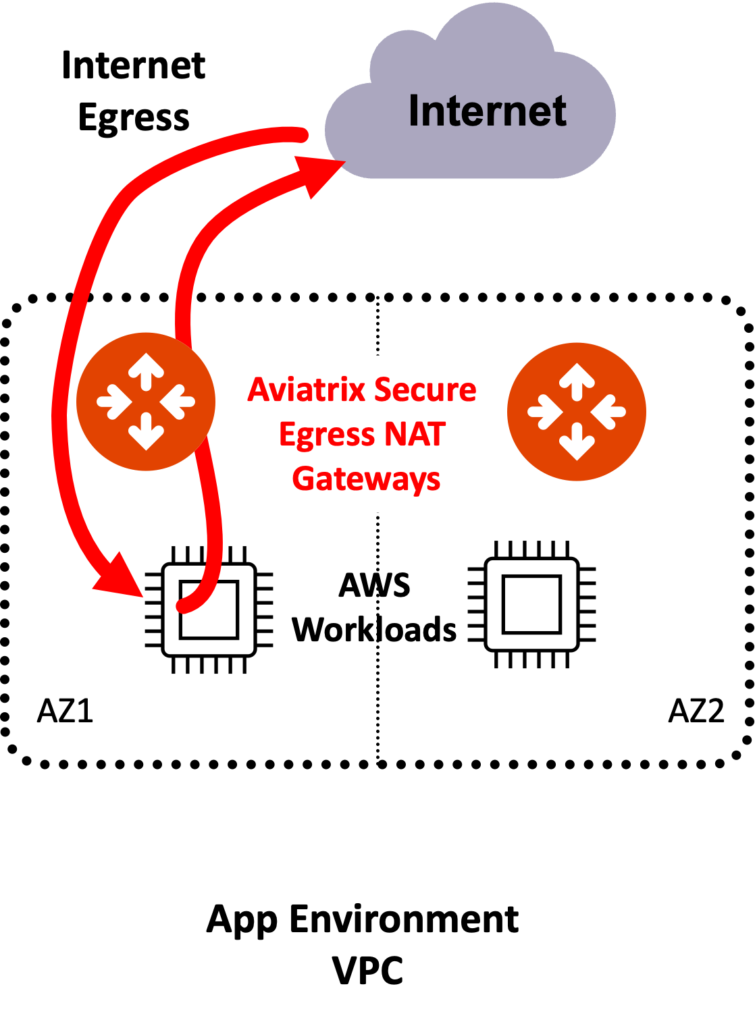Reduce NAT Gateway Costs: Tips & Tricks
Are you tired of watching your cloud computing bill balloon? Understanding and optimizing your Network Address Translation (NAT) gateway usage is a critical step in controlling those costs and maximizing your return on investment.
NAT gateways, essential components for enabling instances within private subnets to connect to the internet, often come with associated costs that, if not managed effectively, can significantly impact your budget. This article delves into the intricacies of NAT gateway pricing, exploring strategies to minimize data transfer charges, and providing insights into making informed decisions about your AWS infrastructure. We'll uncover the hidden costs, compare different approaches, and equip you with the knowledge to optimize your cloud spending.
Before we dive into the optimization strategies, let's clarify the fundamental cost structure. NAT gateways primarily incur two types of charges: hourly fees and data processing fees. The hourly fee is a fixed cost for each NAT gateway instance, while data processing fees are based on the volume of data processed by the gateway. Additionally, data transfer charges apply when data moves between your VPC and the internet.
| Category | Description | Cost Component |
| Hourly Fee | The cost for each hour a NAT gateway is provisioned. | $0.045 per NAT gateway per hour (this may vary depending on the region) |
| Data Processing Fees | Charges based on the amount of data processed by the NAT gateway. | Varies depending on the data volume and the region. |
| Data Transfer Fees | Costs associated with moving data between your VPC and the internet. | Standard data transfer rates applicable to the region and data volume. For example, data transfer out to the internet can vary. |
The initial cost may seem manageable, but it can quickly accumulate, especially if your application processes a significant amount of data or requires high availability across multiple Availability Zones (AZs). Consider a scenario where you have multiple NAT gateways deployed across different AZs to ensure redundancy. Each of these gateways will incur the hourly charge, effectively multiplying the cost.
To mitigate these costs, several strategies can be employed. One of the most effective is to reduce data transfer charges. This is where understanding the architecture and the flow of data becomes crucial. The primary driver of data transfer costs is, of course, the movement of data outside of the AWS network. By optimizing the data flow, you can directly impact your bottom line.
One of the most effective ways to reduce data transfer charges is by strategically employing interface endpoints or gateway endpoints for accessing other AWS services. Interface endpoints, powered by AWS PrivateLink, enable private connectivity to AWS services without traversing the public internet. This means that data transfer between your VPC and supported services like S3, DynamoDB, or Kinesis occurs within the AWS network, typically resulting in zero or significantly reduced data transfer costs.
Gateway endpoints are another cost-effective option for accessing specific AWS services, such as S3 and DynamoDB. Unlike interface endpoints, gateway endpoints are free to create and use. The trade-off is that gateway endpoints support a limited set of services, but if your application primarily interacts with S3 or DynamoDB, they are an excellent way to eliminate data transfer charges. By using gateway endpoints, your instances in a private subnet can access these services directly, avoiding the need for data to pass through the NAT gateway and incur associated charges.
Let's consider a practical example. Imagine an EC2 instance in a private subnet needs to upload a 1 GB file to an S3 bucket. If the traffic is routed through a NAT gateway, you'll incur data transfer charges for the outbound data. However, by configuring a gateway endpoint for S3 within your VPC, the EC2 instance can directly access the S3 bucket without utilizing the NAT gateway. This results in zero data transfer charges for the 1 GB file upload, representing a direct cost saving.
Beyond data transfer optimization, it's essential to understand how to choose between a NAT instance and a NAT gateway. While NAT instances are less expensive to operate (you pay only for the EC2 instance and associated data transfer), they require manual configuration and maintenance. They also lack the high availability features of a NAT gateway. If your application requires high availability and can handle the hourly cost, a NAT gateway is the preferred choice. Consider the pricing and performance of different AWS NAT devices, comparing the trade-offs between cost and availability.
The AWS Pricing Calculator is an invaluable tool for estimating and comparing the costs of different NAT gateway configurations. By inputting your expected data processing volume, data transfer requirements, and other relevant parameters, you can accurately forecast the monthly cost of your NAT gateway infrastructure. This allows you to compare different scenarios and choose the most cost-effective solution for your specific needs.
Consider your bandwidth and availability needs. If your application requires substantial bandwidth and high availability, a NAT gateway is the best option. However, if your bandwidth requirements are relatively low and you can tolerate some downtime, a NAT instance might be more cost-effective. To optimize your costs, leverage the AWS pricing calculator and carefully assess your bandwidth and availability requirements.
Additionally, you can optimize your costs by utilizing AWS maintenance windows. These scheduled windows allow you to perform routine maintenance tasks, such as patching or updating your NAT gateway instances. Scheduling these tasks during off-peak hours can help minimize the impact on your application's performance and avoid any unnecessary downtime. Planning for maintenance windows allows you to balance cost savings with the need for a reliable and performant application. Its worth noting that while NAT gateways are designed for high availability, maintenance windows provide a structured approach to ensure the long-term health and optimal performance of your infrastructure.
Another crucial factor is the architecture of your application and the placement of your resources. NAT gateways are regional resources, meaning they are deployed within a specific AWS region. While they provide high availability within an Availability Zone (AZ), they do not span multiple AZs. This means that if you need high availability across multiple AZs, you must deploy a separate NAT gateway in each AZ.
It's imperative to avoid using a NAT gateway in one AZ for traffic originating from another AZ. This will lead to cross-AZ data transfer charges, which can quickly escalate your costs. Each AZ requires its own NAT gateway to avoid these unnecessary charges. Therefore, when designing your architecture, carefully consider the placement of your resources and ensure that each AZ has its dedicated NAT gateway for optimal performance and cost efficiency.
Moreover, the geographical location of your resources in relation to the endpoints they communicate with significantly impacts costs. If your AWS resources will send or receive a large volume of traffic across Availability Zones, make sure your resources and NAT gateways are in the same Availability Zone. If a significant amount of traffic passes through a NAT gateway, the cost will increase if it has to cross AZ boundaries.
When designing your cloud infrastructure, carefully consider whether the services your application uses support interface or gateway endpoints. If the majority of your application's traffic is directed to AWS services that support these endpoints, its more cost-effective to create interface endpoints or gateway endpoints for these services. Using interface or gateway endpoints can significantly reduce the data transfer costs associated with accessing these services.
Deleting a NAT gateway when it's no longer required is a simple way to avoid unnecessary charges. You can accomplish this through the AWS Management Console, the command line interface (CLI), or the API. This helps to avoid paying for resources that are not being utilized, especially in environments where resources are provisioned and de-provisioned frequently. Regularly reviewing your infrastructure and identifying idle resources for deletion is a best practice for cost optimization.
In certain cases, a NAT instance can be more cost-effective than a NAT gateway. If you need to use a NAT instance, be sure to configure it correctly and ensure it is highly available. While NAT instances require more manual configuration than a NAT gateway, they can be a good solution for low-bandwidth scenarios, offering a trade-off between cost and operational overhead. Careful evaluation of bandwidth requirements and availability needs is crucial to determine if a NAT instance is a suitable option.
Let's explore specific examples. A gaming company uses EC2 instances in a private subnet to host its game servers. These servers need to connect to the internet to communicate with players. The company initially configured a single NAT gateway in one AZ, incurring both hourly and data processing charges. However, by distributing multiple NAT gateways across different AZs and optimizing data transfer using interface endpoints for AWS services such as CloudFront, the company could reduce its costs by 30% while improving the availability of its gaming infrastructure.
Another example involves a software-as-a-service (SaaS) provider. This provider leverages EC2 instances in a private subnet to run its application. The application frequently needs to upload and download data from S3 buckets. The SaaS provider used a NAT gateway, and data transfer charges were a significant cost component. By implementing a gateway endpoint for S3, the SaaS provider could eliminate data transfer charges, leading to a 20% reduction in its overall cloud costs.
If a 1 GB file is transferred from an EC2 instance through a NAT gateway to Amazon S3, a data transfer fee will be applied. By contrast, when the transfer is within the same region, EC2 to S3 data transfer fees are eliminated. The key is to ensure that resources and the NAT gateway are in the same Availability Zone for the most cost-effective architecture.
Furthermore, the pricing structure of NAT gateways can vary by region. The cost per hour, as well as the data processing and transfer rates, differs depending on the geographical location. Always check the latest AWS pricing for the specific region where your resources are deployed to make informed decisions. Understanding these regional variations is crucial for global cloud deployments.
In conclusion, effectively managing NAT gateway costs requires a multi-faceted approach. This includes understanding the pricing model, optimizing data transfer through the use of interface and gateway endpoints, choosing the right NAT device based on your bandwidth and availability needs, and regularly monitoring and reviewing your infrastructure. By implementing these strategies, you can significantly reduce your cloud costs and optimize your AWS infrastructure.


